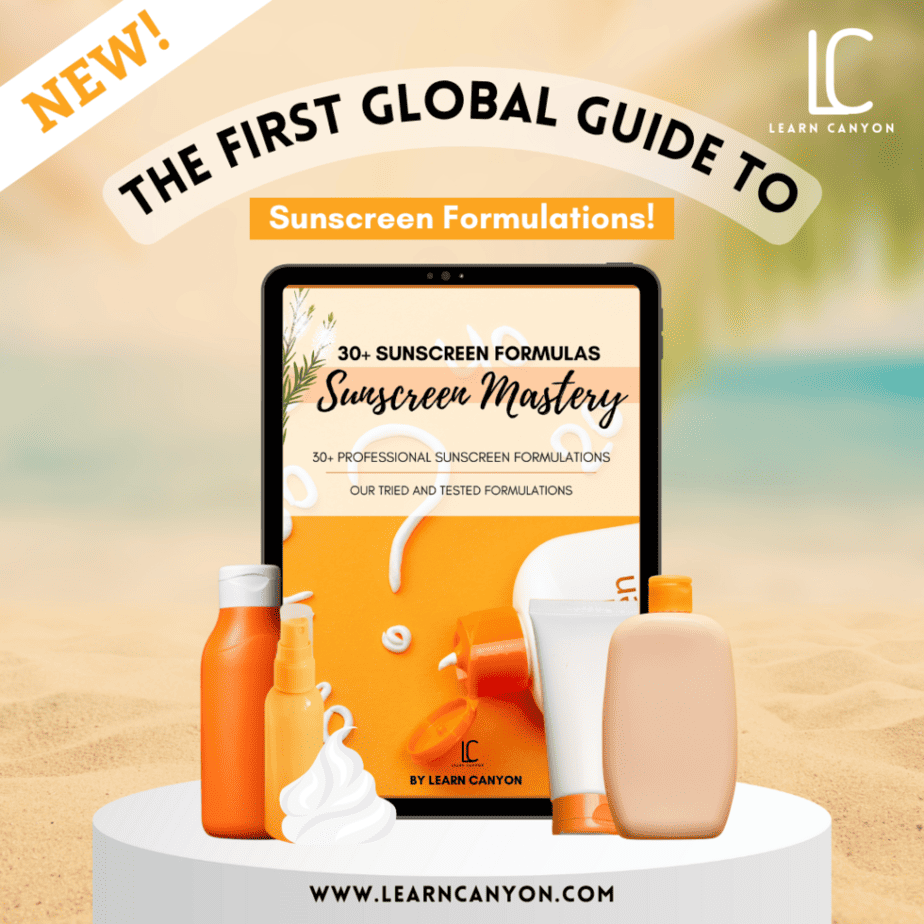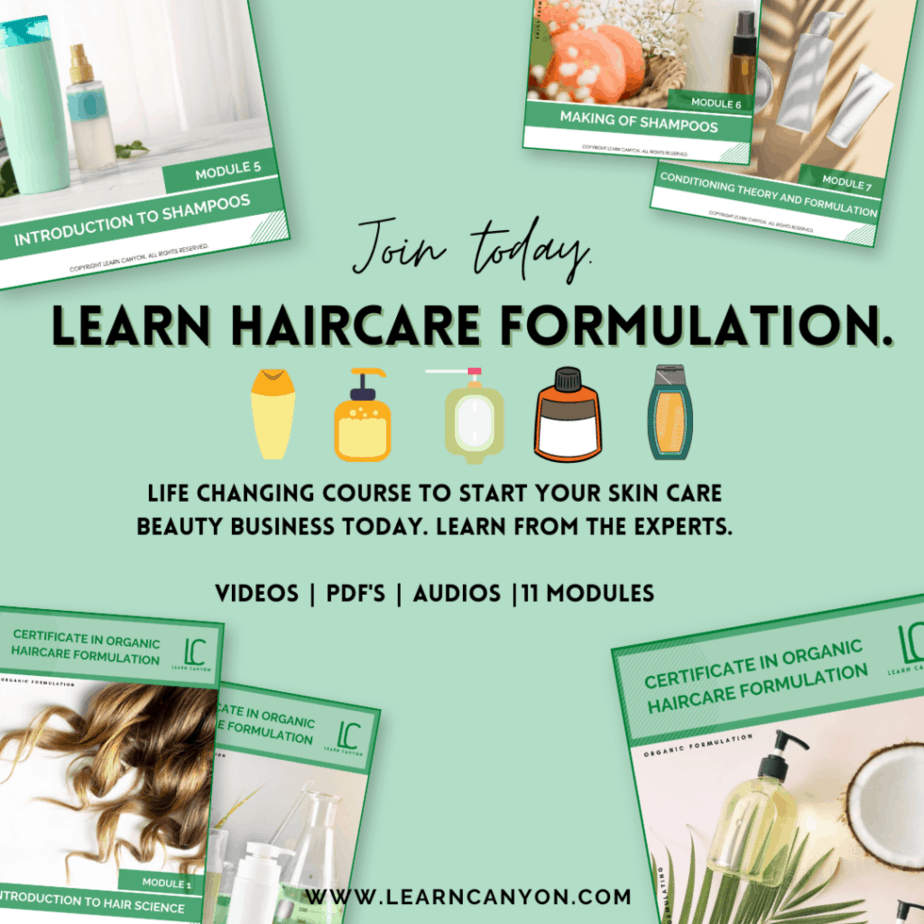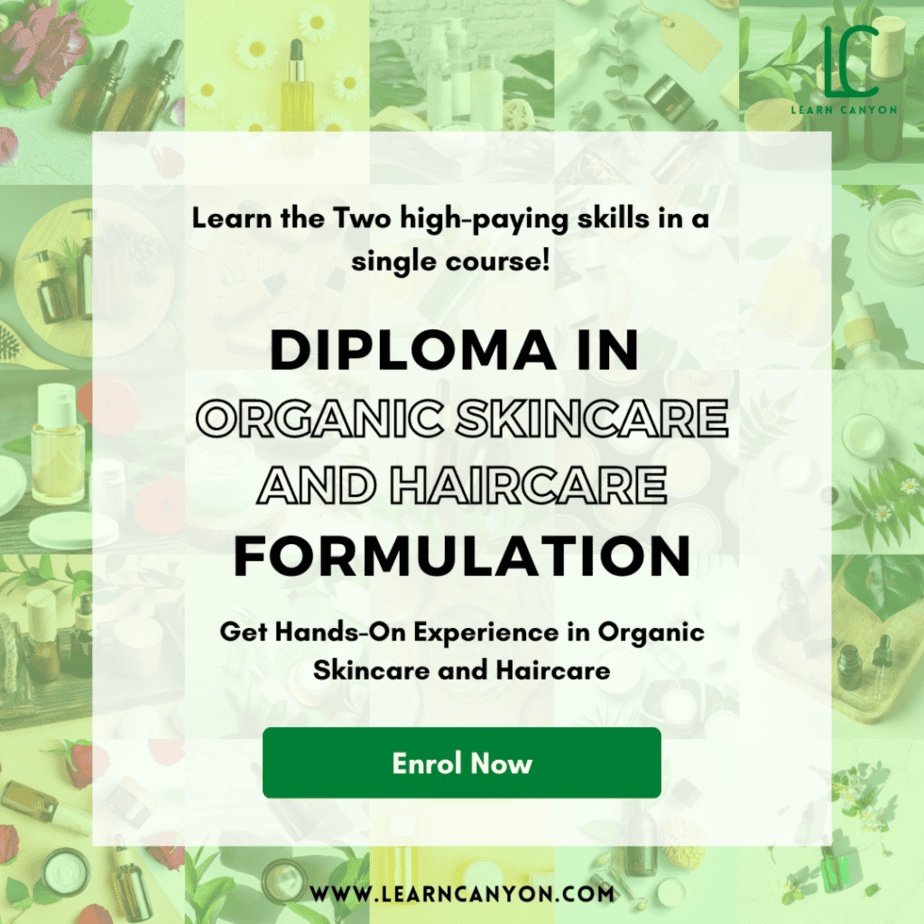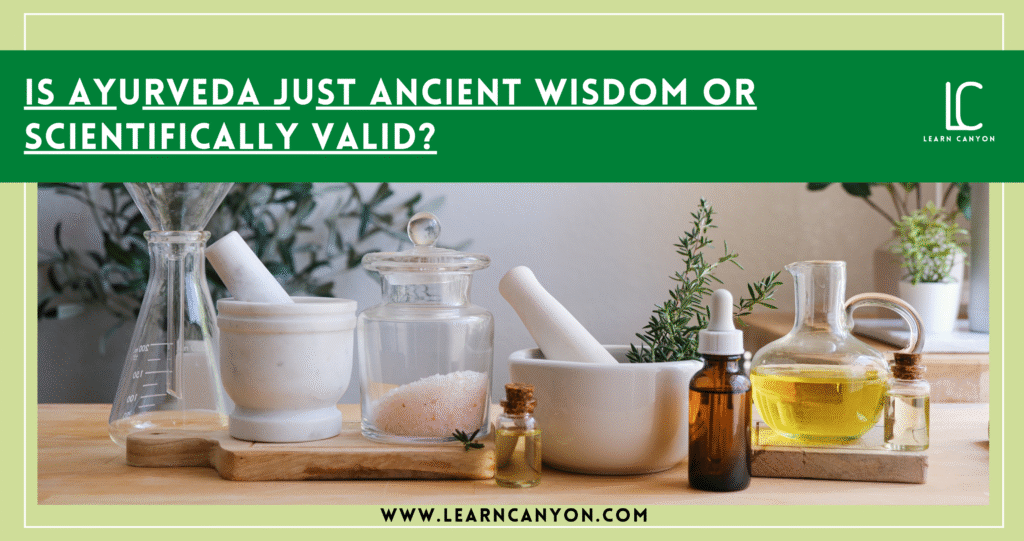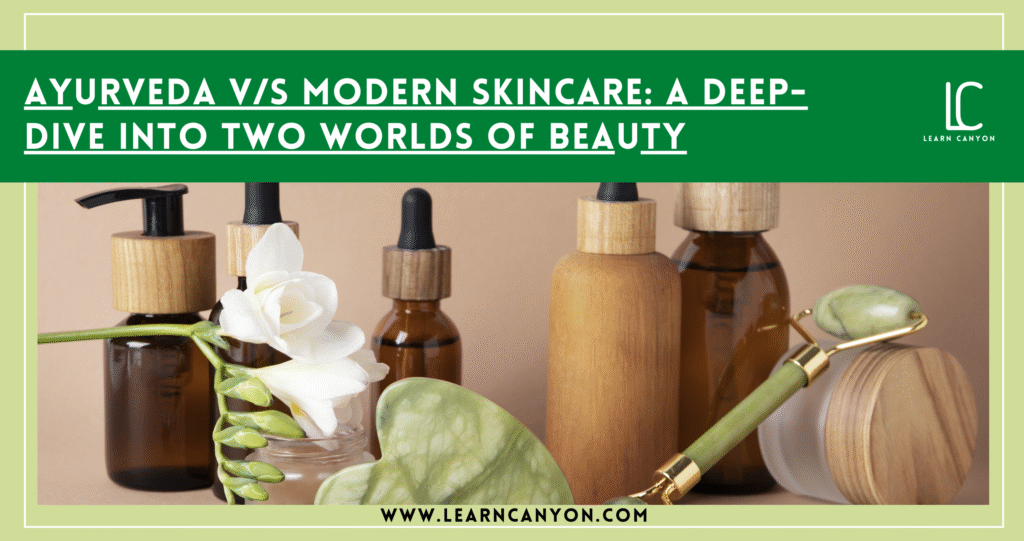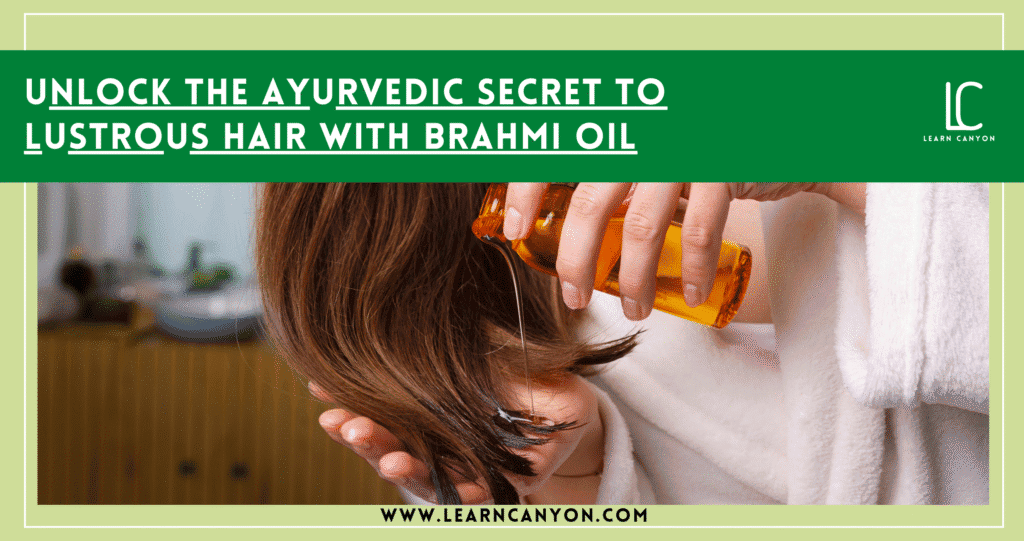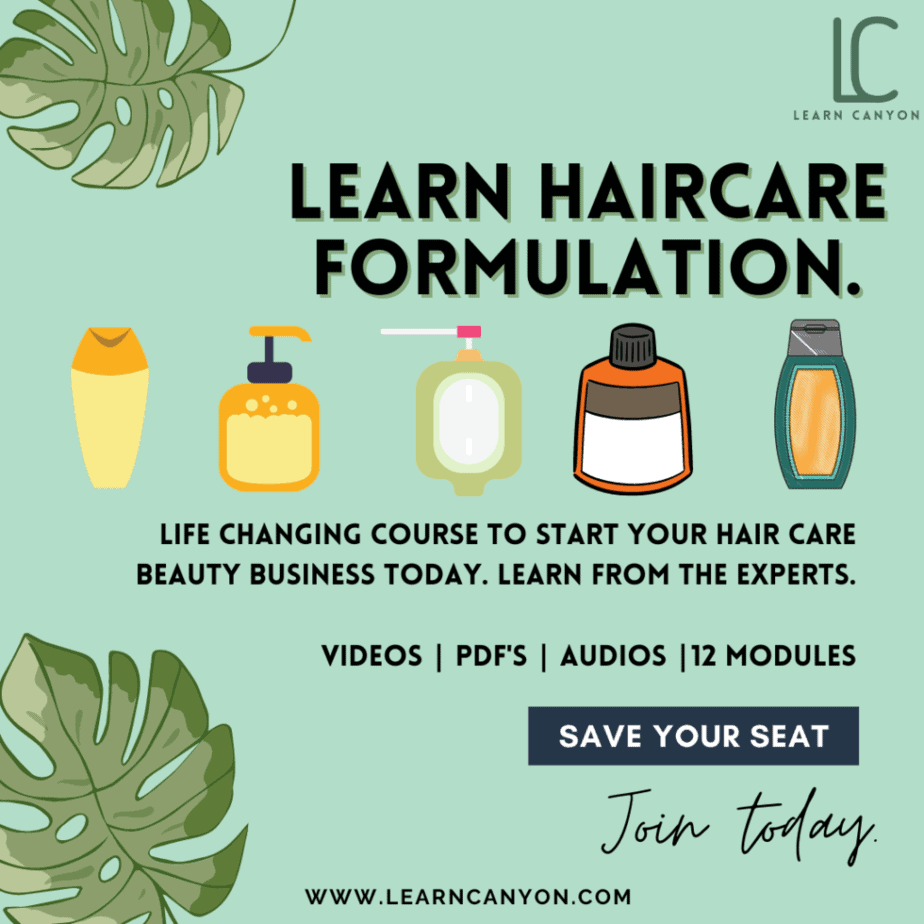If you’re anything like me, a formulator who deeply respects the roots of Ayurveda but also loves diving into modern cosmetic science then you’ve probably asked yourself this: How can we honour the timeless wisdom of Ayurvedic hair care while still giving our formulations the edge of scientific innovation?
That question has guided much of my journey.
Ayurveda has always offered us powerful herbs like Bhringraj, Amla, and Brahmi used for centuries to support scalp health, hair strength, and natural shine. But as a formulator in today’s world, I also know that relying solely on traditional methods may not always unlock the full potential of these botanicals.
Modern consumers are not just looking for heritage, they want performance, clinical backing, and visible results.
The good news?
We don’t have to choose one over the other. With the right approach, we can create beautiful synergies where ancient Ayurvedic ingredients meet cutting-edge techniques like nano-encapsulation, phytosomes, and AI-powered customization.
In this blog, I’m sharing 10 innovative ways to bridge this powerful gap so you can formulate Ayurvedic haircare products that are not only rooted in tradition but also elevated by science.
Let’s dive in!
1- Advanced Herbal Extraction Techniques
As cosmetic formulators, we’ve all learned that what you put in deeply influences what you get out. When it comes to herbal skincare and haircare especially in the Ayurvedic tradition the power of our products lies in the integrity of our extracts.
For centuries, we’ve relied on time-tested methods like decoctions, infusions, and oil macerations. These are beautiful, ritualistic practices that carry the essence of Ayurvedic wisdom. But let’s face it while they are effective to an extent, they can be inconsistent in terms of potency, and often lack the stability required for shelf-ready, global formulations.
That’s why modern herbalists and cosmetic chemists are now embracing advanced extraction technologies tools that allow us to maintain the soul of the herb while enhancing its performance, bioavailability, and formulation compatibility.
Supercritical CO₂ Extraction
This is one of the most elegant solutions for creating high-quality, solvent-free extracts. By using carbon dioxide at supercritical conditions (where it acts as both a liquid and a gas), we’re able to extract the full phytochemical profile of the plant without heat, alcohol, or chemical solvents.
Herbs like Bhringraj, Brahmi, and Neem retain their aroma, actives, and antioxidant power in a highly concentrated form. The result? Extracts that are more potent, stable, and sensory-pleasing perfect for high-performance serums, scalp elixirs, and leave-in treatments.
Ultrasound-Assisted Extraction (UAE)
Ultrasound may sound futuristic, but it’s all about efficiency. This technique uses high-frequency sound waves to rupture plant cell walls, allowing actives to release faster and more completely. It’s particularly useful when working with polyphenol-rich herbs like Amla, Hibiscus, or Green Tea, where antioxidant preservation is key.
The best part? UAE allows us to work at lower temperatures protecting heat-sensitive vitamins and enzymes while significantly reducing the extraction time.
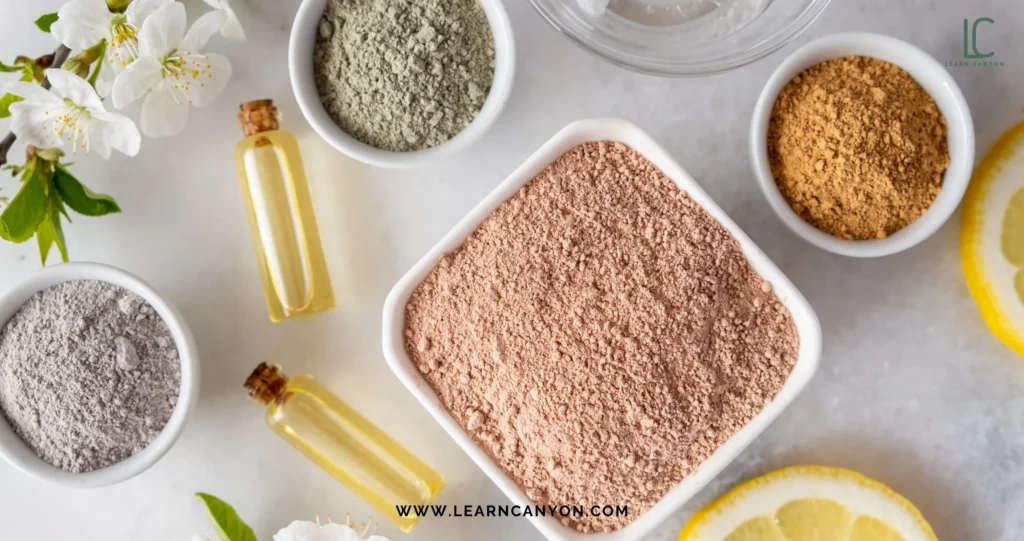
Fermentation-Based Extraction
This is where science meets alchemy. Fermentation isn’t just a preservation method it’s a transformation. Through microbial fermentation, tough-to-absorb compounds are broken down into bioavailable metabolites. This means that even herbs like Shikakai, Fenugreek, or Ashwagandha can have their nutrients rendered more absorbable and effective for scalp and hair applications.
Plus, fermentation brings in naturally occurring peptides, amino acids, and enzymes, making your extract richer, more nourishing, and microbiome-friendly.
What’s beautiful about these modern techniques is that they don’t replace tradition they enhance it. They allow us to honor ancient herbal wisdom while meeting modern consumer demands: effectiveness, safety, clarity of sourcing, and innovation.
Let’s be real today’s conscious consumer doesn’t just want to believe in the power of herbs; they want evidence. They want actives that are scientifically backed, ethically extracted, and truly effective. With these advanced methods, we’re able to craft formulations that are not only inspired by Ayurveda but elevated by science.
Because in this era of clean beauty, it’s not enough to be “natural.” You have to be potent, precise, and proven.
Nano-Encapsulation for Deeper Scalp Penetration
Let’s talk about one of the most revolutionary tools in a modern Ayurvedic formulator’s toolkit: nano-encapsulation.
Ayurveda has always emphasized deep, targeted nourishment of the scalp and hair roots. From ancient scalp massages with medicated oils to rasayana herbs that promise rejuvenation, the intention has always been the same: reach the source of the issue and heal it from within.
But here’s the catch: many of our potent botanical actives, while incredibly powerful, come with large molecular structures or are highly sensitive to oxidation, heat, or light. In simpler terms?
They may struggle to penetrate past the scalp’s outermost barrier and lose potency before they even reach the follicle.
Enter nano-encapsulation, a brilliant bridge between time-honored wisdom and cutting-edge cosmetic science.
What is Nano-Encapsulation?
Nano-encapsulation involves packaging an active ingredient into tiny nano-sized carriers such as liposomes, niosomes, or polymeric vesicles that can bypass the skin’s outer defenses and deliver the ingredient precisely where it’s needed.
These carriers are often made from biocompatible materials like phospholipids (which mimic the skin’s natural structure), ensuring they’re safe, non-irritating, and easily absorbed.
Why is this a Game-Changer in Ayurvedic Haircare?
Let’s say you’re working with Bakuchi (Psoralea corylifolia)—our beloved Ayurvedic alternative to retinol. While it offers wonderful skin-renewing and follicle-stimulating benefits, it can be photosensitive and mildly irritating at higher concentrations. By encapsulating it, we protect its active compounds and control its release, allowing for deeper, gentler absorption over time.
Or take Amla extract, loaded with vitamin C and antioxidants. Its molecular size can sometimes limit penetration, especially when used in oil-based treatments. But once nano-encapsulated? It becomes bioavailable at a cellular level, actively working inside the follicle to stimulate growth and fight oxidative stress.
Targeted Delivery + Prolonged Nourishment
One of the biggest perks of nano-encapsulation is sustained release. Unlike traditional application methods where most of the actives stay on the scalp surface or worse, get rinsed off nano-carriers release the actives slowly over several hours.
This means:
- Long-lasting hydration and treatment
- Reduced irritation or overload on the scalp
- Enhanced efficacy from just one application a day
I personally love using nano-encapsulation in hair growth serums, anti-dandruff scalp treatments, and scalp elixirs.
A great example?
Nano-encapsulated Neem extract.
Traditionally known for its strong, lingering scent and surface-level action, it now becomes a stealthy, potent inflammation-fighter soothing irritated scalps without overwhelming the senses.
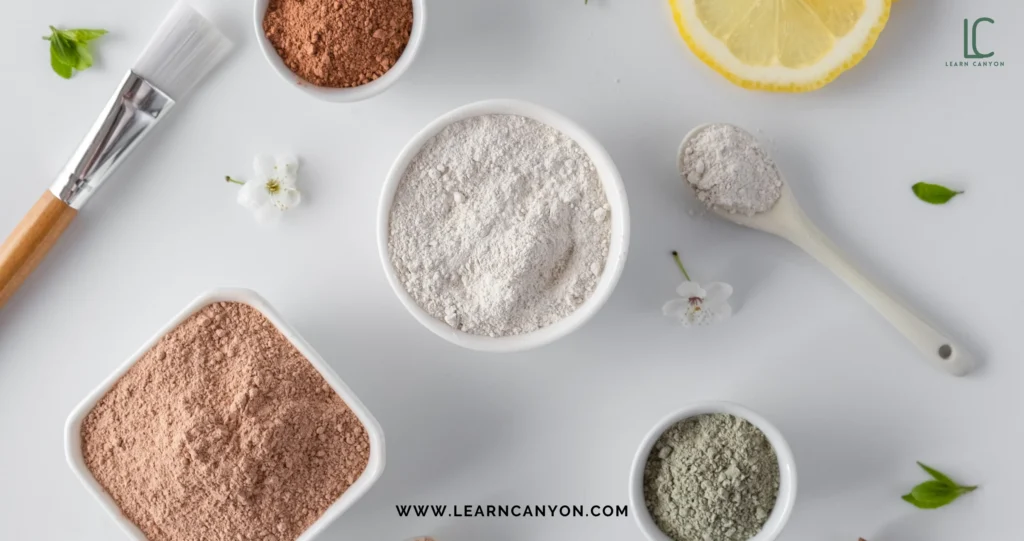
Merging Ayurveda and Innovation
The magic happens when we combine ancient plant wisdom with modern delivery systems. Ayurveda tells us what to use Ashwagandha, Fenugreek, Hibiscus, Brahmi but nano-encapsulation tells us how to deliver it intelligently, precisely, and potently.
This technique empowers us to go beyond surface-level treatments and create next-generation formulations that:
- Feel luxurious
- Smell refined
- Penetrate deeply
- Deliver proven results
Prebiotics & Probiotics for Scalp Microbiome Balance
Let me tell you if there’s one area where Ayurveda and modern microbiome science are in total harmony, it’s this: a balanced internal and external environment leads to vibrant, healthy hair.
Ayurveda has always emphasized the importance of a cool, clear, and calm scalp as the foundation for hair vitality. Classic herbs like Neem, Tulsi, Triphala, and Sandalwood have been used for centuries to purify, soothe, and detoxify the scalp essentially nurturing an environment where the follicles can thrive.
What we now understand through microbiome research is the scientific reasoning behind that wisdom. Your scalp is not just skin, it’s an ecosystem teeming with billions of microbes, both good and bad. When this delicate balance is disrupted by harsh shampoos, environmental pollutants, hormonal changes, or even over-cleansing it can lead to a cascade of issues: dandruff, itchiness, seborrheic dermatitis, excess oiliness, or inflammation-induced hair fall.
This is where prebiotics and probiotics step in as modern-day miracle workers—and some of my absolute favorite tools for crafting smart, gentle, and effective scalp care formulas.
Prebiotics:
Think of prebiotics as fertilizer for your scalp’s beneficial bacteria. Ingredients like:
- Inulin (extracted from chicory root)
- Alpha-glucan oligosaccharide
- Xylitol and its derivatives
…work by nourishing the helpful microbes and helping them outcompete the pathogenic ones. This encourages a naturally balanced microbiome, improves scalp hydration, and reduces the likelihood of flare-ups and imbalances.
I love using prebiotics in:
- Scalp mists
- Leave-in tonics
- Gentle no-rinse cleansers
They’re especially helpful when you’re formulating for dry, flaky, or post-dandruff recovery scalps, as they help restore the skin’s natural ecosystem gently without aggressive treatments or stripping.
Probiotics:
When you want to go deeper and actually restore microbial balance, probiotics are your go-to. These are live or lysed beneficial bacteria or more commonly, their ferments and lysates that help repopulate and rebalance the scalp’s microbiome.
Some of my favorites include:
- Lactobacillus ferment lysate
- Bifida ferment lysate
- Saccharomyces/Xylinum Black Tea Ferment
These are brilliant in therapeutic leave-on treatments ideal for scalps that are prone to:
- Sensitivity and inflammation
- Itchiness or flaking
- Barrier damage due to coloring, heat styling, or harsh products
Probiotics help strengthen the scalp’s protective layer, reduce trans-epidermal water loss, and calm inflammatory responses.
The result?
A healthier, more resilient scalp that can support hair growth and follicular health more effectively.
What’s even more powerful is how seamlessly prebiotics and probiotics pair with Ayurvedic botanicals.
Imagine this:
- A scalp serum featuring Neem hydrosol (purifying), Bhringraj extract (strengthening), and Lactobacillus ferment lysate (microbiome support)
- Or a hair tonic with Triphala decoction, Tulsi distillate, and Inulin prebiotic to calm itchiness while feeding beneficial flora
We’re not just layering actives we’re creating synergistic ecosystems inside a bottle, formulations that work in harmony with the scalp’s natural rhythms rather than fighting against them.
Why This Matters More Than Ever
Today’s scalp is under siege.
Think about it stress, hormone disruptors, sulfates, synthetic fragrances, dry shampoos, and pollution all wreak havoc on the scalp microbiome. And most conventional products only address the symptoms, not the root cause.
By incorporating prebiotic and probiotic actives, we’re formulating at a whole new level targeting the cause beneath the cause. We’re restoring balance, rebuilding resilience, and reestablishing the scalp as the fertile ground from which healthy hair can truly grow.
Because when we combine Ayurvedic scalp care traditions with the precision of microbiome science, we don’t just make pretty products we create formulas with purpose, intention, and lasting impact.
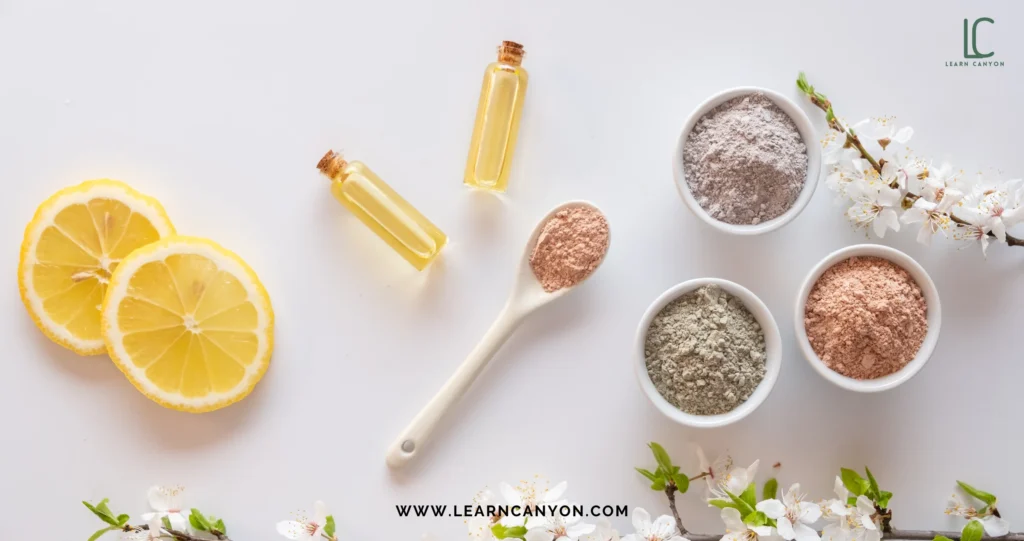
Adaptogenic Herbs for Stress-Related Hair Fall
Let’s face it stress is the silent saboteur of healthy hair.
You could be doing everything right eating balanced meals, oiling your scalp religiously, using only the cleanest herbal shampoos and still find yourself watching strands fall out by the handful in the shower or on your pillow. Why? Because emotional, mental, and physical stress doesn’t just affect your mood it disrupts your entire neuroendocrine system.
Prolonged stress can push a large number of follicles into the telogen (resting) phase, reduce circulation to the scalp, increase oxidative stress, and trigger inflammatory cascades that damage the delicate follicular environment.
And this is where adaptogens come in true gifts from Ayurveda that are more relevant today than ever before.
What Are Adaptogens?
Adaptogens are unique herbs that help the body adapt to stress physiological, emotional, or environmental. Unlike stimulants that push the body into overdrive, adaptogens bring the body back into balance, modulating cortisol levels, calming the nervous system, and supporting hormone regulation.
They work systemically, but their effects ripple down to the cellular level improving scalp health, hair follicle resilience, and overall vitality.
Ayurvedic Adaptogens I Love for Haircare:
- Ashwagandha (Withania somnifera): A classic rasayana known for its cortisol-lowering effects. It supports adrenal health, reduces systemic inflammation, and helps mitigate stress-related hair thinning. It’s excellent in overnight scalp treatments or postpartum hair blends.
- Shatavari (Asparagus racemosus): Known for its adaptogenic and hormone-balancing qualities, especially for women. It’s incredibly helpful in addressing PCOS-induced hair loss or any imbalance triggered by hormonal fluctuations.
- Brahmi (Bacopa monnieri): Not just a mind tonic, but also a cooling, circulation-boosting herb that soothes the scalp and supports clarity of mind. It calms the overactive sympathetic nervous system perfect for those with tension-related hair fall.
- Tulsi (Holy Basil): A spiritual and physiological detoxifier. It protects the body against oxidative stress, improves immune response, and supports healthy cortisol metabolism. I especially love Tulsi in hydrosols and scalp sprays for an instant mood-and-scalp reset.
- Gotu Kola (Centella asiatica): Rich in triterpenoids and antioxidants, it supports collagen synthesis, boosts microcirculation, and works synergistically with adaptogens to strengthen follicles and reduce inflammation.
My Favorite Applications & Formulation Tips:
In my lab, I love layering adaptogens into formulas based on the root cause of hair loss whether it’s postpartum recovery, adrenal fatigue, anxiety, or hormone imbalance. Here’s how:
- Ashwagandha + Shatavari in overnight scalp oils, paired with nourishing bases like Brahmi-infused sesame or almond oil, to target stress and hormonal imbalances during sleep.
- Brahmi + Gotu Kola + Niacinamide in a water-based scalp serum that cools inflammation, improves circulation, and helps rebalance stressed-out scalps. Add lavender, Tulsi, or clary sage essential oils for a sensorial, calming touch.
- Tulsi Hydrosol + Inulin Prebiotic in a daily scalp mist for stressed scalps exposed to city pollution, digital fatigue, and modern overstimulation.
These aren’t just feel-good formulas they’re therapeutic, targeting both the internal triggers and external symptoms of stress-related hair fall.
Phytosome Technology for Enhanced Herb Absorption
Let me share one of my favorite behind-the-scenes secrets in formulation science phytosomes.
If you’ve ever worked with powerhouse Ayurvedic herbs like Turmeric, Gotu Kola, or Green Tea and felt like the results were… underwhelming .. you’re not alone. The problem usually isn’t the potency of the herb. It’s the bioavailability.
Many of our beloved herbal extracts are hydrophilic (water-loving). That’s wonderful in theory, especially when we’re using water-based mediums like teas, decoctions, or hydrosols. But the scalp and skin?
They’re lipid-rich environments, and anything water-soluble struggles to pass through the outer barrier. The result? Incredible herbs sitting on the surface, unable to deliver their full magic deep within the follicle or dermal tissue.
That’s where phytosome technology steps in and it’s nothing short of transformative.
What Is a Phytosome?
A phytosome is a molecular complex made by bonding a plant’s active constituents with phospholipids the same structural molecules that make up our cell membranes. This bond creates a lipid-compatible complex that the skin and scalp readily recognize and absorb.
In other words: you’re wrapping a water-loving plant molecule in a fat-loving shell, making it easier for the body to absorb it, hold onto it, and use it effectively.
Unlike simple emulsions or extracts, phytosomes are designed for deeper delivery and prolonged activity with minimal irritation and maximum efficacy.
Why It’s a Game-Changer for Ayurvedic Formulations
Ayurvedic herbs are naturally rich in polyphenols, flavonoids, and terpenoids—powerful actives that influence inflammation, circulation, and cell regeneration. But without proper delivery, they often can’t penetrate deep enough to activate change where it matters.
With phytosome technology, we’re giving these traditional ingredients a modern upgrade turning them into high-performance actives that:
- Absorb more efficiently
- Stay active longer
- Work at a deeper level of skin or follicular tissue
My Go-To Herbal Phytosomes in Haircare
- Gotu Kola Phytosome: Known for its triterpenoids, this form significantly improves microcirculation, strengthens the dermal papilla, and supports collagen synthesis around the hair follicle. I love this in serums for thinning hair, especially when paired with niacinamide or caffeine.
- Turmeric Phytosome (Curcumin): Offers potent anti-inflammatory benefits without the typical staining or irritation. It helps calm inflammatory scalp conditions, support sebum regulation, and protect against oxidative stress.
- Green Tea Phytosome (EGCG): A powerful antioxidant and DHT blocker that helps reduce androgenic hair fall, soothe irritated scalps, and prevent UV-induced scalp aging.
- Grape Seed Phytosome: Rich in oligomeric proanthocyanidins (OPCs), this extract protects collagen, boosts circulation, and helps reduce hair follicle stress.
These phytosomes are especially effective in leave-in formats like:
- Scalp serums
- Hair elixirs
- Spray-on mists
- Post-shower scalp essences
Because they’re designed for long wear and deep penetration, they shine in formulations that stay on the skin for hours not just rinse-off treatments.
Why I Love Phytosome Tech
As a formulator, I’m always looking for that sweet spot where tradition meets precision, and natural integrity meets scientific sophistication.
Phytosome technology offers exactly that. It lets me take my most beloved Ayurvedic herbs like Turmeric, Brahmi, or Gotu Kola and give them the delivery system they deserve. No more letting beautiful ingredients sit on the surface and underdeliver.
And the best part?
Phytosomes feel invisible. No heaviness, no greasiness, no complicated emulsions just herbs working hard in the background, with noticeable results on the outside.
Personalized Ayurvedic Haircare Using AI
If there’s one shift that’s redefining the future of Ayurvedic haircare it’s personalization. And let me tell you, when we combine the timeless intelligence of Ayurveda with the transformative power of AI, the result isn’t just innovation it’s pure magic.
Ayurveda has always been personalized. It was never a one-size-fits-all approach. From the moment you’re diagnosed with your prakriti (constitution) Vata, Pitta, or Kapha your entire wellness plan is tailored to your mind-body type, current imbalances (vikruti), environment, season, and lifestyle.
But here’s the challenge: when we scale formulation for larger audiences, that beautifully individual philosophy often gets diluted. We’re left creating generalized blends that, while still rooted in Ayurvedic wisdom, may miss the mark for someone’s exact needs.
That’s where AI-powered personalization steps in and transforms everything.
Imagine this: someone lands on your haircare brand’s website. Instead of guessing what oil or serum suits them best, they’re guided through an intuitive, AI-driven questionnaire. This tool gathers inputs on:
- Hair texture and type
- Scalp condition (oily, dry, itchy, flaky)
- Lifestyle factors (sleep, diet, stress)
- Environmental triggers (pollution, humidity, seasonal change)
- Emotional health and hormonal patterns
But it goes deeper. The AI interprets this data through an Ayurvedic lens, mapping the user to their primary dosha, assessing current imbalances, and correlating that with modern scalp science like microbiome health, sebum production, and even stress-related hormonal impact on follicles.
And just like that, we move from a generic recommendation to a deeply personalized protocol.
From Diagnosis to Delivery: Personalized, Just Like Ayurveda Intended
As a formulator, I’ve started designing modular base formulas think:
- A neutral herbal oil blend (infused with balancing herbs like Brahmi, Bhringraj, and Methi)
- A universal water-based serum or tonic (lightweight and pH-balanced)
The magic happens when AI recommends targeted actives, such as:
- Gotu Kola extract for thinning hair in a Vata-dominant individual
- Neem and Tea Tree essential oils for Kapha-types with oily, congested scalps
- Ashwagandha and Shatavari extracts for stress-induced Pitta imbalances
These are then added on-demand, creating a formula that speaks directly to the user’s current needs not just their dosha, but their lifestyle today.
Even more exciting? AI can track changes over time.
Maybe someone’s hair fall was due to postpartum hormone shifts, but three months later, it’s due to sleep deprivation and stress. Maybe a Pitta imbalance in summer becomes a Vata imbalance in winter. The formulation adapts.
This is real Ayurvedic formulation in motion dynamic, seasonal, and individualized. It’s not just a product. It’s a journey of healing and self-care that evolves with the user.
Why This Matters
Let’s be honest, modern consumers are craving this kind of depth. They don’t want to choose between ancient wisdom and scientific efficacy. They want a system that understands them beyond their hair type emotionally, hormonally, energetically.
AI allows us to scale the soul of Ayurveda to take what was once limited to a one-on-one consultation with a practitioner and bring it into the digital age without losing its essence.
For me, this isn’t about replacing Ayurvedic tradition with technology. It’s about amplifying its brilliance using the tools available to us today. With AI, we can deliver what Ayurveda has always promised: deeply personalized care rooted in nature, guided by science, and tailored to the unique individual.
And when we bring that into the hands (and scalps!) of everyday people in a way that feels effortless, intuitive, and luxurious?
That’s not just innovation.
That’s the future of Ayurvedic haircare and honestly, it’s the future we’ve all been waiting for.
Hybrid Formulas: Ayurvedic Herbs + Peptides
This one’s especially close to my heart because it represents the perfect marriage of two worlds I absolutely love: ancient Ayurvedic plant wisdom and high-performance cosmetic science.
As a formulator, I’ve always held the belief that Ayurveda offers a soulful and holistic foundation. Herbs like Bhringraj, Amla, Brahmi, Fenugreek, Gotu Kola, and Hibiscus are time-tested allies for stimulating growth, detoxifying the scalp, reducing inflammation, and enhancing follicular strength.
But let’s be honest today’s beauty user isn’t just looking for wellness they’re looking for visible results, and often faster than traditional remedies can deliver on their own. This is especially true in cases of progressive hair thinning, postpartum shedding, hormonal hair fall, and stress-induced follicular fatigue.
That’s why I’m obsessed with hybrid formulas powerful, synergistic blends that bring together Ayurvedic herbs and modern actives like peptides, amino acids, and growth factors.
Ayurveda Lays the Foundation
Let’s give Ayurveda the credit it deserves: it’s not just about surface care it’s about balancing the root cause.
- Bhringraj improves circulation and strengthens follicles.
- Amla is a potent antioxidant and DHT blocker.
- Fenugreek is rich in nicotinic acid and proteins that nourish the scalp.
- Brahmi supports mental clarity and reduces the inflammatory response linked to stress-related hair fall.
- Ashwagandha helps regulate cortisol, making it perfect for hormonal or emotionally triggered shedding.
These herbs work holistically, calming the system and preparing the scalp for regeneration.
Peptides Bring the Precision
Now, enter peptides. These tiny chains of amino acids act as cellular messengers instructing the skin or follicle to regenerate, repair, and in some cases, grow stronger hair. Unlike herbs, peptides can be engineered to target specific biological responses.
Some of my favorites include:
- Copper Tripeptide-1 – A wound-healing peptide that boosts collagen, elastin, and glycosaminoglycan production around the follicle. It strengthens the follicular anchor and improves hair density.
- Biomimetic Growth Peptides – These mimic natural growth factors in the body to stimulate dermal papilla cells, prolong the anagen phase, and increase hair diameter.
- Acetyl Tetrapeptide-3 – A newer generation peptide that improves anchoring of hair in the follicle, reduces inflammation, and supports ECM (extracellular matrix) integrity.
When you blend these modern actives with Ayurvedic ingredients, something magical happens. You don’t just support hair growth you amplify it through dual-action intelligence:
- Herbs detox, nourish, and balance.
- Peptides stimulate, strengthen, and repair.
One of my favorite creations was a scalp serum combining:
- Ashwagandha extract – to regulate cortisol and calm stress-induced hair fall
- Copper Tripeptide-1 – to enhance circulation, collagen synthesis, and root anchoring
- A touch of Gotu Kola and Niacinamide – to improve microcirculation and soothe the scalp
The result?
A product that felt herbal and grounded but delivered clinical-level results over time.
Formulation Ideas:
- Dual-Phase Serums: Oil phase infused with Ayurvedic macerations (like Brahmi, Fenugreek, or Kalonji), and water phase powered with peptides, panthenol, and low molecular hyaluronic acid for hydration and delivery.
- Creamy Scalp Masks: Use natural emulsifiers to create a soothing scalp mask with Amla extract, Bhringraj oil, and biomimetic peptides for those who need deep regeneration.
- Leave-In Hair Elixirs: Lightweight sprays combining Tulsi hydrosol, Gotu Kola phytosome, and Acetyl Tetrapeptide-3 for daily use without buildup.
Why This Hybrid Approach Works
This isn’t about choosing between Ayurveda and science it’s about honoring both traditions, understanding the strengths each brings to the table, and designing formulas that feel intuitive while delivering real results.
Because today’s consumers want products that are:
- Rooted in tradition (they want a story)
- Scientifically backed (they want proof)
- Customized and results-driven (they want transformation)
And when Bhringraj meets bio-peptides, or Ashwagandha meets Copper Tripeptide, we’re not just formulating we’re crafting experiences that nurture, heal, and truly perform.
Hydrolyzed Proteins + Ayurvedic Oils for Hair Repair
Let’s talk about damaged hair because let’s be real, in today’s high-speed, high-heat, high-stress world, even the healthiest strands are under constant attack. From daily styling tools and harsh water minerals to environmental pollutants, hair coloring, chemical treatments, and chronic stress our hair is silently crying for help.
Now, Ayurveda has always emphasized prevention and nourishment. And for centuries, we’ve relied on deeply restorative oils like:
- Coconut oil – a classic penetrative oil rich in lauric acid
- Amla oil – antioxidant-rich, known for improving shine and strengthening roots
- Brahmi oil – calming and circulation-boosting
- Sesame oil – warming, grounding, and deeply nourishing
These oils are beautiful tools for maintaining hair health, preventing breakage, and calming an irritated scalp. But here’s the catch when the hair is already damaged at a structural level, especially the cuticle and the cortex, oils alone aren’t enough. They can protect and soften, yes but they can’t rebuild broken protein bonds.
That’s where hydrolyzed proteins enter the chat and they’re total game-changers for modern Ayurvedic-inspired repair formulas.
What Are Hydrolyzed Proteins and Why Are They Essential?
Hydrolyzed proteins are proteins that have been enzymatically or chemically broken down into smaller peptides and amino acids. This makes them small enough to penetrate the hair shaft, bind to damaged areas, and strengthen hair from within.
Depending on the source and molecular weight, they can:
- Fill in gaps in the cuticle
- Reinforce tensile strength in the cortex
- Improve moisture retention and elasticity
- Reduce frizz, breakage, and porosity
Some favorites in my formulating kit:
- Hydrolyzed Wheat Protein – strengthens and adds volume
- Hydrolyzed Rice Protein – gentle, smoothing, enhances shine
- Hydrolyzed Keratin – mimics the natural keratin in hair, ideal for deep repair
- Hydrolyzed Oat Protein – soothing and softening, perfect for dry, sensitive scalps
- Hydrolyzed Silk Protein – leaves a smooth, glossy finish
The real magic happens when you pair these intelligent proteins with traditional Ayurvedic oils.
- The oils nourish, condition, and protect forming a breathable seal around the hair shaft, improving flexibility and smoothing the outer cuticle.
- The proteins go inside, rebuilding the internal structure, adding body, and repairing the foundation of the strand.
This dual-action repair system mimics what healthy hair naturally does: retain oil-based lipids on the outside and strong protein chains on the inside.
Formulation Spotlight:
One of my go-to creations for chemically treated, dry, or heat-damaged hair is a pre-wash mask designed to:
- Hydrate
- Strengthen
- Rebuild
- Smooth
Star Ingredients:
- Moringa and Amla-infused Sesame Oil – deeply nourishing and rich in essential fatty acids
- Hydrolyzed Rice Protein – adds smoothness, bounce, and volume
- Panthenol (Provitamin B5) – hydrates, strengthens, and adds shine
- Aloe Vera Juice – balances pH and provides a hydrating water base
- Optional: a few drops of Rosemary and Lavender essential oil for soothing and stimulating scalp benefits
Too much protein can leave the hair stiff or brittle, a common mistake in DIY or even professional formulas. And while oils are incredible for shine and flexibility, excessive oiling especially on fine or low-porosity hair can leave it limp, heavy, or greasy.
The sweet spot?
Formulas that strike a protein–moisture–lipid balance, allowing:
- Proteins to rebuild
- Oils to protect
- Humectants to hydrate
And when these are selected according to Ayurvedic principles (based on dosha, hair type, and seasonal needs), the result is haircare that’s not only high-performing but also deeply intuitive.
Real hair repair isn’t about coating hair in silicones or giving it a temporary “gloss.” It’s about rebuilding what’s been lost, nourishing what’s been depleted, and doing it in a way that’s rooted in nature but elevated by science.
By combining hydrolyzed proteins with Ayurvedic oils, we’re creating a whole new generation of haircare that’s:
- Clean yet clinically effective
- Natural yet performance-driven
- Traditional yet innovative
Because when your haircare doesn’t just look good but heals deeply you’re not just washing or masking… you’re transforming.
Green Chemistry & Sustainable Packaging
Let’s take a mindful step back and look beyond what’s inside the jar or bottle because in the world of conscious formulation, how we create is just as important as what we create.
In Ayurveda, there’s an intrinsic, almost sacred reverence for nature. Every ritual, every herb, every preparation is performed with deep awareness of the natural world. Whether it’s harvesting Brahmi at dawn or preparing decoctions in copper pots under moonlight, the ancient wisdom has always taught us this: we are not separate from nature we are a part of it.
As modern Ayurvedic formulators, it’s our responsibility to carry this ethos into every step of our process from ingredient sourcing to product delivery by embracing green chemistry and sustainable packaging practices that align with both tradition and the future.
🌱 Green Chemistry: Clean Science, Conscious Formulation
At its heart, green chemistry is about designing formulations that are safe for humans and gentle on the planet from sourcing and manufacturing, all the way to usage and disposal.
In my formulation philosophy, this means:
- Biodegradable ingredients that break down naturally in water systems
- Eco-certified emulsifiers and surfactants, derived from renewable resources like coconut, sugar, or olive
- Low-impact processing techniques, such as cold infusion or ultrasound-assisted extraction, that preserve herbal potency without excessive energy or solvent use
- Avoiding petrochemical-derived preservatives, synthetic colorants, and harsh solvents that can damage both the microbiome and the environment
Whenever I source Ayurvedic herbs like Neem, Tulsi, Amla, or Bhringraj, I make it a point to partner with organic farms, tribal cooperatives, or wildcrafters who use ethical harvesting practices because the potency of the plant is only as powerful as the intention with which it was grown and collected.
Green chemistry doesn’t mean compromise it means elevated responsibility, transparent formulation, and true alignment with Ayurvedic values.
♻️ Sustainable Packaging: Making the First Impression Count
Let’s be honest packaging is often the first thing your customer sees. And in today’s conscious marketplace, it speaks volumes about your brand before they even open the lid.
I always say: your packaging should tell your sustainability story.
That could look like:
- Amber glass bottles for oils and serums elegant, recyclable, and protective of botanical actives
- Aluminum tins or refillable containers for masks and balms sturdy, light-proof, and endlessly reusable
- Bioplastics made from sugarcane or cornstarch offering a renewable alternative to petroleum-based plastics
- Compostable refill pouches, perfect for zero-waste retail models or eco-conscious subscription kits
- Minimalist labels, printed on recycled paper with soy-based inks
And here’s one of my favorite strategies: for brands I consult, we often design refill systems where customers keep the primary bottle or jar and simply refill the product via a pouch or concentrate. Not only does this reduce waste, but it builds long-term loyalty and reinforces the brand’s values with every reuse.
The Bigger Picture:
Yes, we want our packaging to look beautiful on a shelf. Yes, we want to evoke the elegance of Ayurvedic rituals. But more than that we want to create impact.
- We want to support soil health, not strip it.
- We want to champion ethical communities, not exploit them.
- We want to produce intelligent formulations that nourish hair and skin without polluting water systems when they wash off.
Because when a luxurious Ayurvedic hair oil comes in a refillable glass bottle, wrapped in biodegradable seed paper, with a story that honors both the earth and the formulation that’s when your brand transcends product and becomes a movement.
The most luxurious haircare product isn’t just the one that smells divine or feels indulgent. It’s the one that’s been thoughtfully crafted, ethically sourced, and sustainably packaged so that your hair and the planet both feel loved, cared for, and protected.
This is how we honor the roots of Ayurveda while designing for the future of the planet.
Because true beauty isn’t just about looking good it’s about doing good, too.
Clinical Validation & Ingredient Standardization
Let’s bring this home with a topic that’s often overlooked in the world of Ayurvedic haircare but truthfully, it’s one of the most critical if we want to earn trust, achieve consistency, and compete at a global level:
Clinical validation and ingredient standardization.
Now, I get it. Ayurveda has stood the test of time. For thousands of years, we’ve relied on Bhringraj for hair growth, Amla for shine, Neem for dandruff, and Ashwagandha for hormonal balance. We’ve seen the results in our homes, our clinics, and our communities.
But today’s consumer lives in a world of lab reports, INCI lists, and peer-reviewed studies. They don’t just want tradition they want proof. They want products that are not only inspired by ancient wisdom but also validated by modern science.
And honestly?
That’s where we have an incredible opportunity.
📊 Ingredient Standardization: The Foundation of Consistency
Let’s start with standardization. This simply means that an extract is measured and guaranteed to contain a specific amount of its key active compound so that from one batch to the next, you get the same performance, potency, and predictability.
Take Bhringraj extract, for example. Its primary bioactive, wedelolactone, is responsible for its hair growth–stimulating and anti-inflammatory properties. When I work with this herb, I always look for a version standardized to at least 2% wedelolactone.
Why? Because:
- It gives me confidence in the ingredient’s efficacy.
- It ensures that my formulation performs consistently, whether I’m making 10 bottles or 10,000.
- It reduces variability, especially important in regulatory compliance and shelf-life testing.
Without standardization, two batches of the “same” Bhringraj extract can perform very differently. And that’s a risk no serious formulator or conscious brand can afford to take.
Now, let’s talk about the real game-changer: clinical validation.
This is what elevates a product from a beautiful, nature-inspired formula to a category-defining solution backed by data.
Clinical validation can come in several forms:
- In-vitro studies showing the cellular effects of your formula (e.g., increased fibroblast activity or DHT inhibition)
- In-vivo clinical trials demonstrating actual user benefits over time (e.g., reduced hair fall, increased density)
- Dermatological testing to confirm safety and non-irritation
- Consumer perception studies even small-scale trials revealing how users feel the product performs
Imagine the credibility boost when you can say:
“In a 30-day user trial, 82% of participants reported visibly stronger hair and reduced shedding.”
Or:
“This serum combines Ayurvedic herbs with Copper Peptides, clinically shown to improve hair anchorage and follicle regeneration.”
Now your product isn’t just a natural remedy it’s a validated solution.
🌿 Ayurveda + Data = The Future of Haircare
Here’s the most important part: you don’t have to compromise Ayurveda to fit into the clinical world.
In fact, Ayurveda is ready for this evolution. It already has the depth, the tradition, and the results. All we need to do is support it with structure, documentation, and smart testing.
I’ve worked with brands that blend Ayurvedic hero herbs like Brahmi, Tulsi, and Shatavari with clinically proven actives like peptides, biotin, caffeine, or niacinamide. They then back it all with trichological testing, microscopic scalp analysis, or hair density tracking apps—and the results are not only impressive, they resonate with modern consumers looking for nature + proof.
The truth is, when you pair ancient plant intelligence with modern clinical evidence, you’re not diluting Ayurveda. You’re honoring it, evolving it, and inviting it into the future with professionalism and power.
Because in today’s haircare space, the brands that will stand the test of time are the ones that offer:
- Traditional depth
- Modern relevance
- And evidence-backed performance
When you have that trifecta authenticity, innovation, and credibility you don’t just create products. You create legacy formulas that transform lives and redefine what Ayurvedic haircare can be.
As formulators, we are the bridge between age-old rituals and modern-day expectations. And if there’s one thing this journey has shown us, it’s that Ayurveda doesn’t need to stay in the past it simply needs to evolve with intention.
Each of the approaches we’ve explored from nano-encapsulation and phytosomes to AI personalization and clinical validation represents a conscious step toward honoring tradition while embracing innovation. We’re not replacing Ayurveda. We’re amplifying it. We’re unlocking its full potential in ways our ancestors could have only imagined, all while staying rooted in its core philosophy: balance, harmony, and holistic well-being.
The real beauty of blending Ayurvedic wisdom with modern cosmetic science is that it allows us to create haircare that is both soulful and smart. We’re no longer choosing between “natural” and “effective” we’re formulating products that are both. Products that respect the earth, the scalp, and the science.
So whether you’re a seasoned formulator or just beginning to explore the magic of Ayurveda, I hope this blog inspires you to innovate with purpose. To question, to experiment, and most importantly, to create formulations that tell a deeper story one where nature and science work together in perfect synergy.
Because when we formulate from a place of knowledge, respect, and creativity… we don’t just make products.
We craft experiences. We build trust. We create change.
And isn’t that the future of truly conscious haircare

